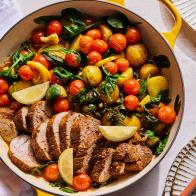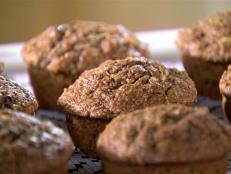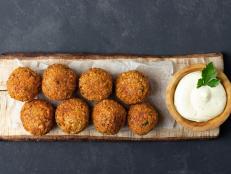Katie's Healthy Bites: Green Up Your Food Choices

When I sit down to think about new year's resolutions, I try to come up with healthy additions that I can make to my lifestyle -- not just “bad things” I need to take away.
As you may know, I'm very passionate about living “green,” so I thought I would share a few simple ways you can green up your life -- particularly your kitchen -- for 2010.
Even if being green is not your thing, these changes can help to save you money, make you healthier and introduce you to some tasty eats. Try one or them all -- every little step helps.
1) Join a Community Supported Agriculture (CSA) program, buying club or food co-operative.
Though each program is a bit different, they have similar goals. These programs connect the community with local farms to supply people with seasonal (and often organic) produce and, in turn, members get yummy food, support local farmers and businesses and help decrease gas waste and pollution because your food does have to travel far from farm to plate. It’s a win-win! Prices and commitments vary for each type of programs, so find the one that meets your needs or go in on a membership with friends and family.
What does that mean? Well, try to prep a full meal with fresh foods you've grown at home, picked up a local farmer's market or confirmed were from your home state -- if not, your local area. According to the book Animal, Vegetable, Miracle, a typical food item in an American meal has traveled an average of 1,500 miles to get to the supermarket and ultimately to your plate. If we ate at least one locally sourced meal a week, we could reduce our country’s demand on our oil supply by 1.1 million barrels a week.
Just a few facts to mull over the next time you go to grab those raspberries in January. Eating local goes hand in hand with buying seasonal foods, which tend to cost less because they are in abundance during their peak and come from nearby. Better still, local produce is packed with nutrients; a plant's nutrients start to deplete as soon as it's picked from the plant and starts its long-distance travels. Check out the Food Network Winter Produce Guide for information on produce to look for at your grocery store right now (like that beautiful swiss chard above).
“Yard trimmings and food residuals together constitute 26 percent of the U.S. municipal solid waste stream,” according to the United States Environmental Protection Agency. Composting -- that is, the act of taking food scraps and letting them break down to biological matter -- is not difficult and has huge benefits, such as reducing the use of fertilizers and methane gas production, helping keep plants healthy, saving money and conserving natural resources.
If you want to start at home, you'll need a few basic tools, including a bucket to collect kitchen food scraps. Many local organizations give out composting buckets (some even collect the compost for you like this local Philadelphia business that I love). For more information on how to get started, visit the Environmental Protection Agency's website.
You don’t have to be a vegetarian to enjoy a meatless meal and serving one a week can help reduce the reliance on meat and the impact its production has. A recent UN report stated that “a full 18 percent of global warming emissions come from raising chickens, turkeys, pigs and other animals for food.” That's more than all the vehicles on the road as well as all forms of transport combined (they total 13 percent). Food advocate Michael Pollan has said, "Even one meatless day a week -- a meatless Monday, which is what we do in my household. If everybody in America did that, that would be the equivalent of taking 20 million mid-size sedans off the road."
Meatless meals not only decrease your environmental impact, but they're good for your health -- eating more veggies means you're upping the vitamins, fiber and antioxidants in your diet and decreasing saturated fat and cholesterol, which can, in turn, decrease our risk of heart disease, obesity and diabetes.
Not convinced? A meatless meal is also a great way to save money and save a few animals in the process. Here are some great recipes -- and more info -- to get you started.
































